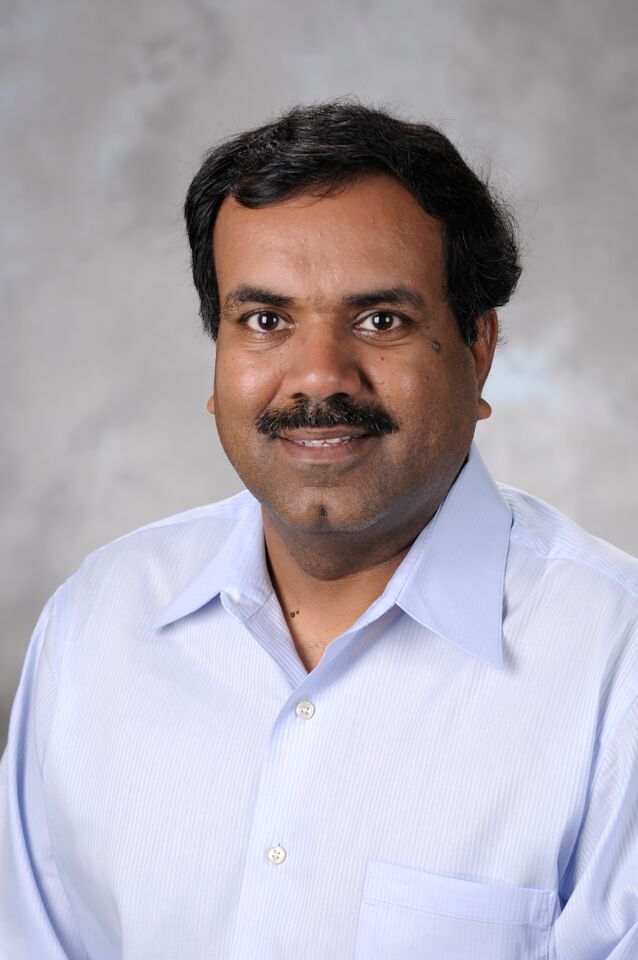Invited Talks
| Parallel Machine Learning Approaches for Reverse Engineering Genome-scale Networks
Srinivas Aluru, Georgia Institute of Technology, USA |
Abstract: Reverse engineering whole-genome networks from large-scale gene expression measurements and analyzing them to extract biologically valid hypotheses are important challenges in systems biology. While simpler models easily scale to large number of genes and gene expression datasets, more accurate models are compute intensive limiting their scale of applicability. In this talk, I will present our research on the development of parallel mutual information and Bayesian network based structure learning methods to eliminate such bottlenecks and facilitate learning of genome-scale networks. Such networks can be used as a guide to predicting gene function and extracting context-specific subnetworks. |

|
Bio: Srinivas Aluru is a professor in the School of Computational Science and Engineering at Georgia Institute of Technology. He co-directs the Georgia Tech Interdisciplinary Research Institute in Data Engineering and Science (IDEaS), and co-leads the NSF South Big Data Regional Innovation Hub which serves 16 Southern States in the U.S. and Washington D.C. Aluru conducts research in high performance computing, bioinformatics and systems biology, combinatorial scientific computing, and applied algorithms. He is currently serving as the Chair of the ACM Special Interest Group on Bioinformatics, Computational Biology and Biomedical Informatics (SIGBIO). He is a Fellow of the AAAS and IEEE.
| Graphs and Sparse Matrices: There and Back Again
John Gilbert, UC Santa Barbara, USA |
Abstract: The mathematical connections between graph theory and linear algebra are intimate and well known. The computational links between the two fields are also deep, extending from basic data structures to fundamental decompositions to the design of efficient algorithms. During the first 50 years of this computational relationship, graphs served numerical linear algebra by enabling efficient sparse matrix computation. Recently, matrix computation has been returning the favor. I will talk about the past and present of the relationship in both directions, and speculate a bit on its future. |

|
Bio: John R. Gilbert directs the Combinatorial Scientific Computing Laboratory at the University of California at Santa Barbara, where he is Professor of Computer Science. He has done fundamental work in algorithms and software for combinatorial and numerical problems and for sparse matrix computation, including Matlab’s original sparse matrix capabilities and the SuperLU solver library. His current research applies linear algebraic methods to large-scale graph and network analytics. Professor Gilbert received his PhD from Stanford University in 1981. He has been on the Computer Science faculty at Cornell, a visiting faculty member at MIT, and a Principal Scientist at Xerox PARC, where he directed research in algorithms, distributed sensing and control, and robotics. He has chaired the ACM Special Interest Group on Numerical Mathematics and the SIAM Activity Group on Supercomputing, and is a Fellow of the Society for Industrial and Applied Mathematics.
| The Revolution in Graph Theoretic Optimization
Gary Miller, Carnegie Mellon University, USA |
Abstract: Graph theoretic optimization problems that have been dormant for fifty years are now seeing new and exciting algorithms. These advances have been made possible by Spectral Graph Theory, the interplay between linear algebra and combinatorial graph theory. One application of this interplay is a nearly linear time solver for Symmetric Diagonally Dominant systems (SDD). This seemingly restrictive class of linear systems has received substantial interest in the last fifteen years, and there is an ever growing list of problems that are amenable to SDD solvers, including image segmentation, image denoising, finding solutions to elliptic equations, computing maximum flow in a graph, and graph sparsification. All these examples can be viewed as special cases of convex optimization problems on graphs. |

|
Bio: Gary Miller is a professor of Computer Science at Carnegie Mellon University.
